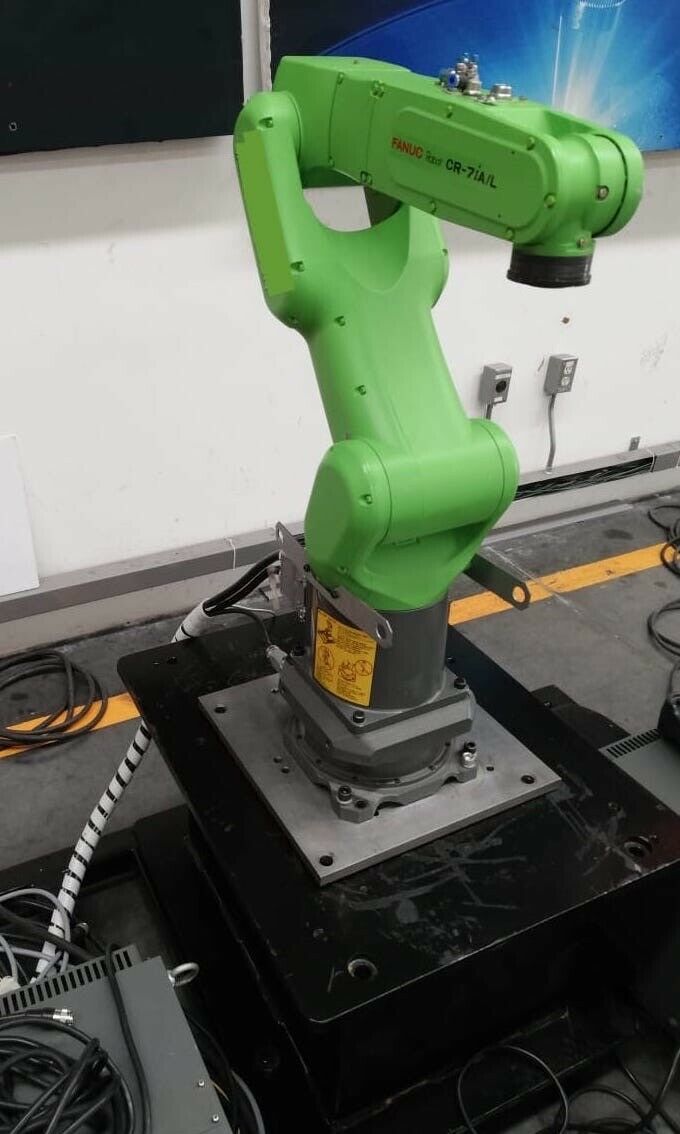Collaborative robots were one of the biggest trends to come out of 2020 and one that has not slowed down throughout 2021. Cobots allow for the addition of robotic automation for manufacturing processes that cannot be fully automated with traditional industrial robots. Cobots can work collaboratively with humans on production related tasks, assisting with the tedious and repetitive elements while workers are freed to focus on the more critical thinking aspects of manufacturing. By assisting workers, collaborative robots can significantly increase productivity and efficiency.
As the popularity of collaborative robots continues to grow, more robotic manufacturers are introducing cobots to their robot lineups. Below is a list of some of the top brands of collaborative robots.
- • FANUC - While FANUC is well-known for their traditional industrial robots, they also produce a line of collaborative robots. FANUC’s CR series features several cobot models. Straying away from their traditional yellow robots, the CR series features bright green exteriors consisting of a rubber covering and rounded edges. In addition to softer and rounder exteriors, FANUC’s CR robots are integrated with contact sensor technology for the safe operation around humans and the prevention of collisions. Standouts of the series include the FANUC CR-35iA which currently has the highest payload of any cobot at 35 kg. Other models from the series include the FANUC CR-7ia and CR-15ia.
- • Universal - Universal Robots specializes in the production of collaborative robots. The UR cobot series features several compact and low payload models. UR cobots feature force sensor technology to monitor when people or objects are nearby. Their force sensors are adjustable and stop robot operation when force is detected making the cobots safe to operate directly alongside people without any safety barriers. Universal’s UR10 can be used for a variety of applications including automated material handling, robotic dispensing, and finishing.
- • KUKA - KUKA is another traditional robot manufacturer that has entered the collaborative robot market. In fact, KUKA was the first to develop a collaborative robot with the release of their LBR 3 in 2004. Today their LBR series continues with their LBR iiwa cobots, including the KUKA lbr iiwa 14-R820. These cobots feature light payloads for delicate robotic assembly, packaging, and palletizing applications. The LBR iiwa cobots feature an IP54 rating, making them some of the most durable cobots in the industry.
- • ABB - ABB first entered the collaborative robot market with their YuMi robot. ABB’s YuMi features two versions, a single arm cobot and a dual arm cobot. The single arm version features 7 axes while the dual arm version consists of 14 axes. ABB has added to their cobot line with their SWIFTI collaborative robot featuring 4 kg of payload capacity and their GoFa cobot which features a 5 kg payload.
- • Yaskawa Motoman - Yaskawa Motoman has also developed a line of collaborative robots. Yaskawa Motoman’s HC series features two cobots designed for material handling applications. The HC robots can operate safety with or around humans due to their PFL (power and force limiting) technology, no pinch point design, and through arm cabling.
